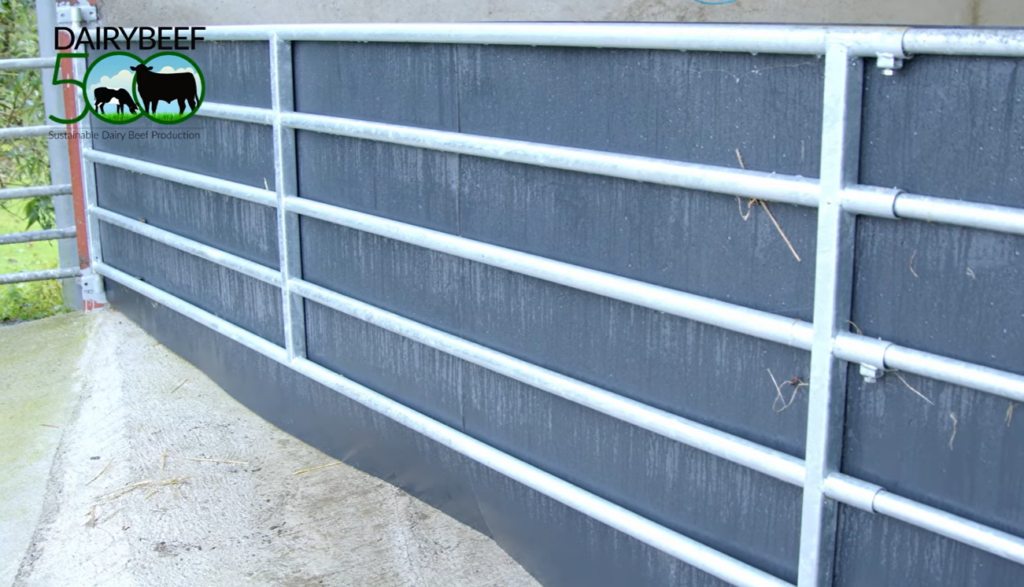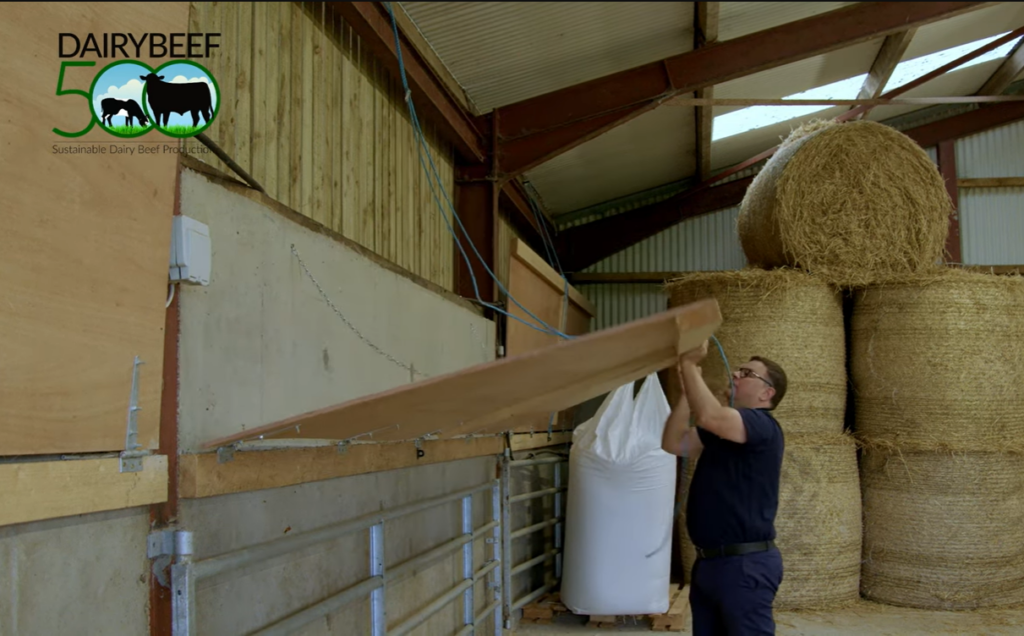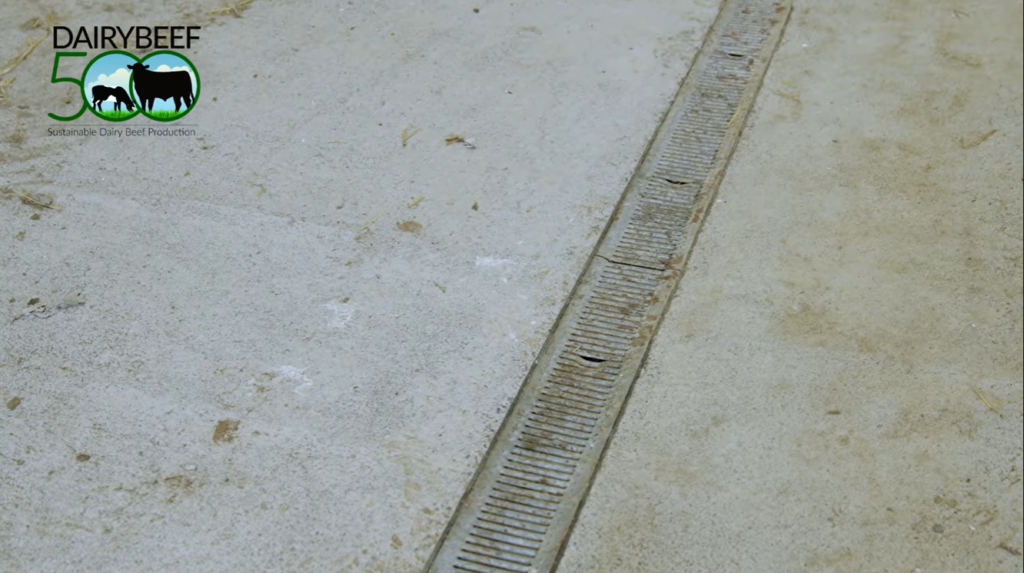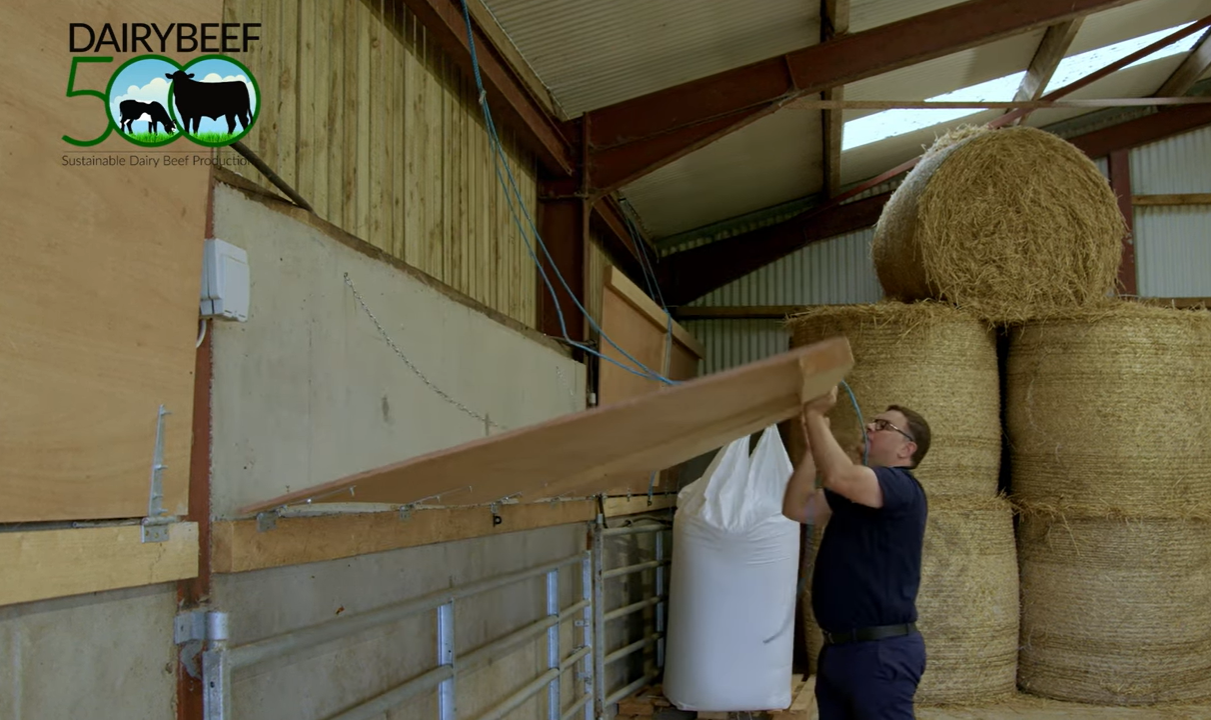Calf-rearing is a seasonal job on most farms in Ireland, and with the peak spring-calving season fast approaching, beef farmers who buy-in calves from the dairy herd for beef production will now be making final adjustments to their sheds, ahead of the arrival of calves on their farm.
While some farmers have custom-built calf housing on their farm for rearing calves, many farmers use multi-purpose sheds for rearing calves.
It is important that a calf-rearing shed is dry, clean, bright, draught free and well ventilated. It should also allow the calves easy access to milk, clean water, concentrates and straw.
In the video below, Teagasc DairyBeef 500 programme advisor, Gordon Peppard outlines some of the key features in good calf housing:
The Teagasc advisor explained that “plenty of natural light should be available in all calf houses with at least 10% of the roof or side sheeting translucent”.
Group calf pens should allow for a minimum space of 2.2m squared for calves which includes the feeding area.
A pen that is 4.8m wide by 4.8m long would have a total area of 23m², which would be sufficient space for 10 calves.
Water troughs should be available at an appropriate height at the front of the pen to allow for easy calf access and for regular inspection and cleaning by the farmer.
Ideally, a 1:20 floor slope should be in place from the back to the front of the pen to ensure the calves have a dry bed.
A seepage channel should be located at the front of the pen to take all seepages away to a collection tank.
Good ventilation is essential to remove moisture, viruses, bacteria, dust and gases. The shed should provide a continuous stream of fresh air. The air inlet should always be above calf height.



Stock boarding and adjustable canopies above calf height can be fitted to existing calf sheds to help provide a draught-free environment and provide additional warmth in cold spells.
A well laid-out calf shed allows for less labour, less time and allows for maximum performance of the calf.
